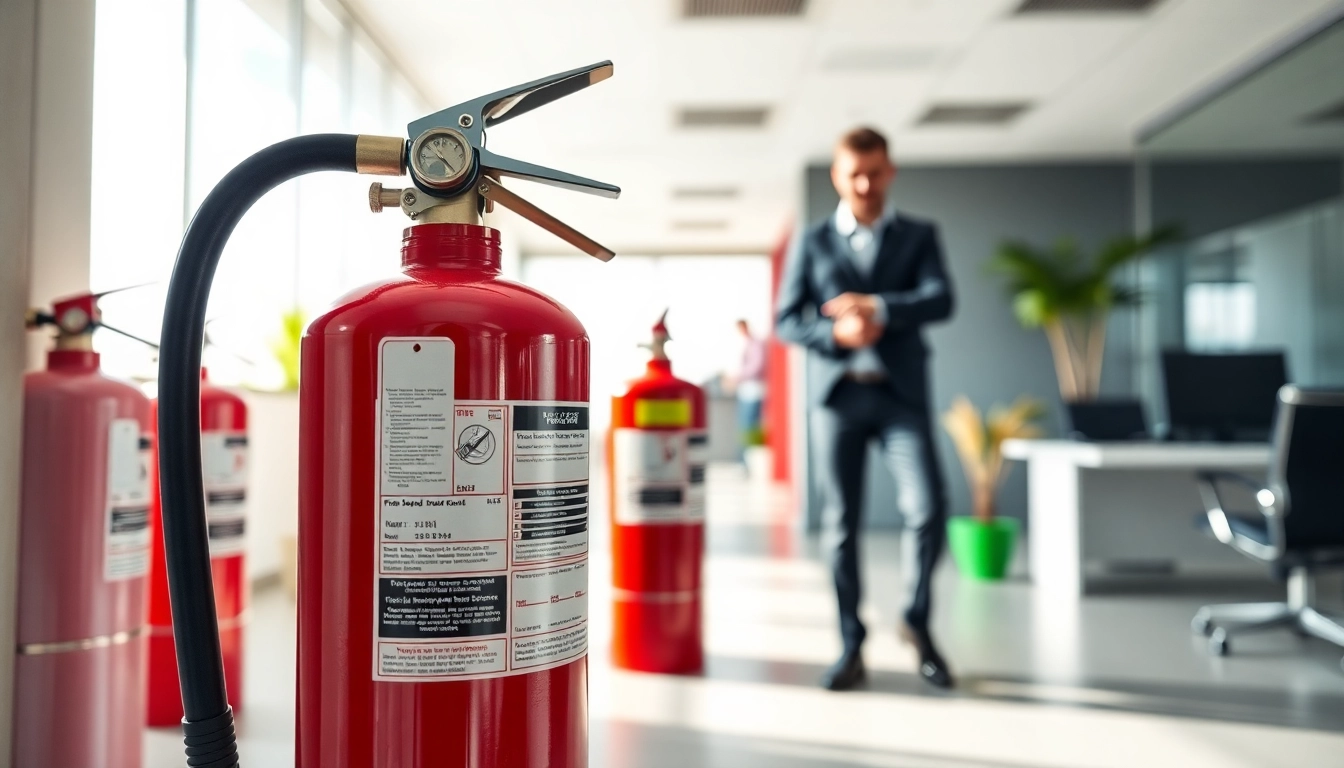
What is Electrical Testing?
Electrical testing is a vital process in the evaluation of electrical systems and components. It serves to ensure that they operate safely and efficiently, conforming to established safety and performance standards. The testing methods can range from simple checks of continuity to complex analyses of electrical performance under various conditions. Electrical Testing encompasses both diagnostic assessments and routine maintenance checks, ensuring that electrical installations are functioning properly.
The Importance of Electrical Testing
Electrical testing holds significant importance in various sectors, including residential, commercial, and industrial applications. Regular electric system evaluations help in identifying potential issues before they become serious hazards, thereby reducing downtime and the risk of malfunction. Furthermore, electrical testing can contribute to the longevity of electrical systems and equipment by maintaining optimal performance levels and ensuring compliance with safety regulations.
Key Terms in Electrical Testing
Understanding key terms related to electrical testing is essential for professionals in the field. Some important terms include:
- Voltage: The electric potential difference between two points, measured in volts.
- Current: The flow of electric charge, measured in amperes (amps).
- Resistance: The opposition to current flow, measured in ohms.
- Continuity: A test to determine if an electrical path is complete.
- Insulation Resistance: A measure of how well insulation resists current flow, critical for ensuring safety.
Types of Electrical Tests Explained
Different types of electrical tests assess various aspects of electrical systems. Common tests include:
- Visual Inspection: The initial step of assessing the physical condition of wiring, outlets, and devices for visible damage.
- Insulation Resistance Testing: An essential check to ensure the integrity of insulation on conductors.
- Grounding Tests: Verifies the effectiveness of grounding systems to protect against electrical faults.
- Power Quality Analysis: Measures the quality of the power supply, assessing issues like voltage sags, spikes, and frequency variations.
- Thermal Imaging: A non-contact method to identify hot spots in electrical systems that may indicate malfunction.
Types of Electrical Testing Methods
Routine Electrical Testing Procedures
Routine electrical testing involves regularly scheduled checks designed to maintain systems at peak efficiency. These tests can include:
- Acceptance Testing: Performed when new equipment is installed to ensure it meets specified requirements.
- Functional Testing: Verifies the operational capabilities of the system under normal conditions.
- Periodic Maintenance Testing: Regular checks that help identify wear and issues over time, assisting in preventative maintenance schedules.
Diagnostic Testing Techniques
Diagnostic testing methods are typically used when performance issues are detected. Techniques include:
- Phase Sequence Testing: Confirms the phase rotation for three-phase systems to ensure proper operation.
- Voltage Drop Testing: Evaluates the resistance in a circuit to identify if voltage levels are acceptable.
- Harmonic Distortion Testing: Assesses deviations in the waveform of electrical signals, which can affect device performance.
Compliance and Safety Testing Standards
Compliance with established safety standards is crucial in electrical testing. Various regulations govern electrical installations, including the National Electrical Code (NEC) and the Occupational Safety and Health Administration (OSHA) standards. Testing ensures compliance with these regulations, promoting safety across environments and industries. Failure to comply can lead to hazardous conditions, legal repercussions, and increased operational costs.
Equipment Used in Electrical Testing
Essential Tools for Electrical Testing
The success of electrical testing significantly relies on the right tools and equipment. Key tools include:
- Multimeters: For measuring voltage, current, and resistance.
- Insulation Testers: To check the insulation integrity of circuits and devices.
- Clamp Meters: For measuring current without the need to disconnect conductors.
- Power Analyzers: To assess energy consumption, quality, and efficiency.
Innovations in Testing Equipment
The field of electrical testing has seen significant advancements in technology. Innovations include:
- Smart Testing Devices: Evolution of multi-functional devices capable of integrating with software for data analysis and reporting.
- Wireless Testing Equipment: Allows for remote monitoring and evaluation, reducing time and increasing efficiency.
- Advanced Software Solutions: Providing automation for test scheduling, data collection, and reporting.
Selecting the Right Equipment for the Job
Choosing the appropriate equipment for electrical testing depends on various factors, including:
- The specific requirements of the testing task.
- The environment in which the testing will occur.
- The expertise and comfort level of the technician using the tools.
Understanding the testing needs allows professionals to make informed decisions, enhancing the reliability of the results.
Safety Considerations in Electrical Testing
Personal Protective Equipment (PPE) Protocols
Personal protective equipment (PPE) is crucial for ensuring the safety of technicians during electrical testing. Essential PPE includes:
- Insulated gloves to prevent electrical shock.
- Safety goggles to protect against flying debris and electric arcs.
- Hearing protection when working near high-power equipment.
Proper use of PPE significantly reduces the risk of accidents and injuries.
Understanding Electrical Hazards
Electrical testing involves various hazards, necessitating a comprehensive understanding of potential risks. Key hazards include:
- Electric Shock: Can occur from accidental contact with live circuits.
- Arc Flash: A dangerous exposure to an electrical explosion from a faulted circuit.
- Falls: Can occur when working at heights, particularly when using ladders and scaffolding near electrical systems.
Recognizing these hazards allows technicians to implement risk mitigation strategies effectively.
Emergency Procedures During Electrical Testing
Establishing and understanding emergency procedures are vital for electrical testing environments. Emergency protocols should include:
- Immediate disconnection of power in case of a shock incident.
- Clear communication channels for reporting issues or injuries.
- First aid training for all personnel involved in electrical testing.
Training personnel in these procedures enhances response times and can save lives in emergencies.
Future Trends in Electrical Testing
Emerging Technologies in Electrical Testing
As technology continues to evolve, new trends are emerging in the field of electrical testing. Innovations such as:
- Artificial Intelligence (AI): AI is increasingly being used to analyze testing data, delivering insights and predictive analytics for maintenance and repairs.
- Internet of Things (IoT): IoT devices enhance monitoring capabilities in electrical systems, enabling continuous performance tracking.
- Advanced Simulation Software: Assists engineers in predicting electrical behavior under various conditions, optimizing system designs before implementation.
The Role of Automation in Testing
Automation is set to transform electrical testing by increasing efficiency and accuracy. Automated systems can carry out repetitive tasks with minimal human intervention, such as:
- Conducting routine tests quickly and accurately.
- Automatically logging test results for comprehensive analysis.
- Sending alerts for maintenance needs based on real-time data analysis.
Impact of Environmental Regulations on Electrical Testing
Environmental regulations increasingly influence electrical testing to ensure compliance with sustainability standards. Key aspects include:
- A push towards energy-efficient electrical systems.
- Mandatory assessments to evaluate the environmental impact of electrical waste and disposal.
- Encouraging businesses to adopt practices that promote environmental responsibility through sustainable testing methodologies.
Understanding these regulations is crucial for compliance and maintaining a competitive edge in the industry.






